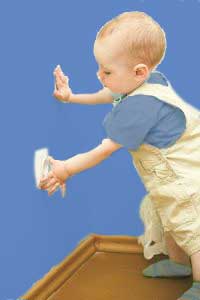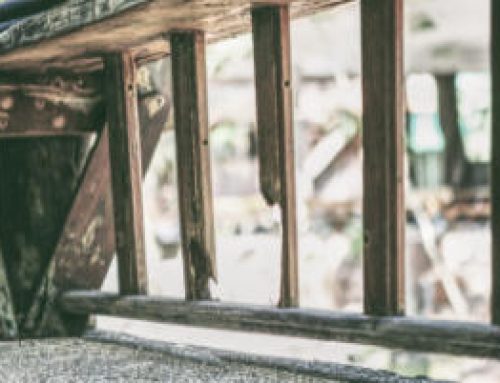Once children become mobile, whether crawling or walking, their natural curiosity takes  them to places they ought not be going. And since parents and others cannot keep a close eye on their children at all times, it makes sense to put safety measures into place that can help avoid home tragedies. As soon as your children start to crawl it is time to start taking safety steps to childproofing your home, and don’t stop with toddlers. Children of all ages need to be protected from household hazards.
them to places they ought not be going. And since parents and others cannot keep a close eye on their children at all times, it makes sense to put safety measures into place that can help avoid home tragedies. As soon as your children start to crawl it is time to start taking safety steps to childproofing your home, and don’t stop with toddlers. Children of all ages need to be protected from household hazards.
“More than a third of child injuries and deaths happen at home,” according to KidsHealth.org, as reported in a National Safety Council article on Childproofing Your Home. “Young kids have the highest risk of being injured at home because that’s where they spend most of their time.”
According to the Centers for Disease Control, the highest risk of injuries occur where there is:
- Water (bathroom, pool, hot tub, kitchen)
- Heat or flame (kitchen, fireplace, grill)
- Toxic substances (medicine cabinet, under the sink, garage, shed, purse)
- Fall potential (stairs, high windows, slippery floors, from furniture)
Safety Steps to Childproofing Your Home
- Install safety latches and locks on cabinets and drawers to prevent access to items stored within.
- Install doorknob covers to prevent children from turning knobs and entering or exiting rooms.
- Use gates to prevent falls on stairways.
- Cover outlets with safety covers and plates to prevent accidental electrocution.
- Anchor furniture and televisions to the wall to prevent tip-over and crush injuries.
- Remove or tie up window shade cords out of reach to prevent accidental strangulation. Cordless window coverings are the best option.
- Unload and lock away firearms to avoid accidental injuries.
- Keep lithium (button-style) batteries away from children. If swallowed, they can be fatal.
- Place hot and sharp items out of reach, especially while cooking or serving meals.
- Check window screens to ensure that they are secure, and install window guards on higher windows. But make sure at least one window in each room is accessible for escape in case of fire.
Related: 12 Safety Devices to Protect Your Children
Family Safety Practices
In addition to putting these safety measures into place to childproof your home, you should take extra steps to ensure the health and safety of your entire family.
- Supervise children at all times
- Keep emergency numbers posted in an easy-to-access location on each floor of the home. Include the fire department, rescue squad, parent phone numbers, doctors, caregivers, teachers, and neighbors and relatives.
- Learn CPR, first aid practices, and the Heimlich maneuver (varies by age). Classes are often offered through your local Y or Red Cross.
- Install and regularly check smoke and carbon monoxide detectors.
- Create a fire escape plan and practice it with your family. Choose a location outside of the home to meet in case of fire.
- Create a disaster readiness plan in case of flooding, tornado, or other natural disaster.
Is Your Home Safe for Children? Ask Först Consulting Group.
At Först Consulting Group, we care about your family’s safety. That’s why we’re offering these safety steps to childproofing your home. We also care about your home’s safety, and offer specialized home inspections to ensure that your home’s structure and systems are installed and working properly.
When you need a construction advocate or construction expert in Northern Virginia, Washington DC or Maryland, contact Först Consulting Group.


